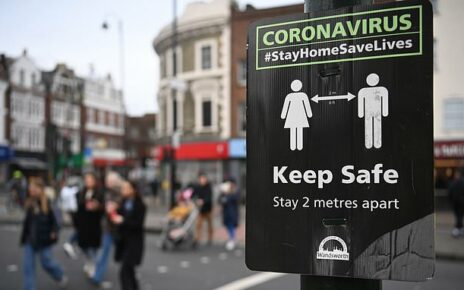Tiger Woods didn’t stop as he crossed the Swilcan Bridge.
The stone bridge that crosses a thin burn at the 18th hole of St. Andrews has long been the spot where legends like Nicklaus and Watson paused in their final trip, taking in the scene and the appreciation of the gallery. Woods took off his cap, raised his hands, slowed … but didn’t stop. Make of that what you will.
A few seconds later, as he walked up the 18th fairway, the emotion overcame him. He dabbed at his eyes as the tears flowed. On the nearby first fairway, Rory McIlroy and Jordan Spieth — two of the players who have taken up a measure of his mantle — watched him pass. Would it be Woods’ last time playing a British Open at St. Andrews? He’s not even sure himself.
“I’ve been doing this since 1995,” Woods said. “I don’t know if I’ll be physically able to to play another British Open here at St. Andrews. I certainly feel like I’ll be able to play more British Opens, but I don’t know if I’ll be able to play when it comes back around here.”
At this point, the numbers don’t really matter. Woods is going home early. The red sweater will remain folded in his luggage. The galleries that would have followed him on the weekend will now disperse to chase McIlroy or Spieth or one of the many other not-Tigers that cruise in his wake.
Just for the record: Woods carded a +3 on Friday to go with a +6 on Thursday. He missed the cut by a mile on a benign day for scoring, a messy end to what had, until Thursday morning, been a delightful week for Woods.
For nearly a quarter of a century, the easy pop-psychology explanation for why Woods won so many majors and Phil Mickelson didn’t was that Woods was a stone-cold killer and Mickelson was too nice of a guy. Where Woods kept an icy distance between himself and literally everyone — fans, media, fellow players — Mickelson was warm, engaging, signing autographs at every opportunity, smiling through life while Woods scowled.
That light-dark dynamic was always too simplistic; Phil’s cheerful exterior concealed a ruthless competitive streak, for one thing. But after seeing Woods in action (and inaction) this week at the Open Championship, it’s interesting to note that as Woods now revels in the love of the golf establishment, he’s a wavering shadow of his former self on the course.
Granted, there’s a much more obvious explanation for Woods’ struggles: the man nearly died from a single-car wreck in February 2021, and he’s still recovering from that catastrophe. But what’s fascinating is how Woods is apparently, at this late date in his career, finally reckoning with the imminent sundown. He made it to the top of the mountain, but he made the journey virtually alone. He’s looking around for company on the journey back down.
Woods spent his championship years regarding everyone around him with disdain, if not outright disgust. Now, he’s become a close friend to many of the next generation of players; Justin Thomas even regards him as an older brother. He tips his cap to the fans he once ignored. He offers up thoughtful responses — well, non-canned ones, at least — in media gatherings he would have previously skipped after terrible rounds like Thursday.
He’s enjoying the embrace of golf’s gatekeepers, and he’s standing up for the game’s history and legacy even as LIV Golf encroaches ever further into the PGA Tour’s territory. This newfound inclusiveness may not win him any more tournaments, but it could win him some peace of mind. And then there was that final walk up 18, the emotion flowing more freely from him than perhaps it ever has on the course.
“The warmth and the ovation on 18, it got to me,” Woods said. “I felt [playing partners Matt Fitzpatrick and Max Homa] stop off the tee at 18, and it was just incredible, the amount of understanding and respect from all the people involved in this event.”
Late Thursday afternoon, at the conclusion of a six-hour round, Woods had walked up the 18th at St. Andrews to the cheers of the few remaining fans in attendance, their shouts of “GO TOY-GAH!” echoing off the Open’s yellow scoreboard and the famed Royal & Ancient Golf Club’s imposing clubhouse. He’d double-bogeyed his first hole on Thursday, and the day didn’t get any better, as he finished the first round at +6. Even so, the fans cheered him, encouraged him, hoping for one more miracle.
“All things considered, where I’ve been, I was hoping I could play this event this year,” Woods said Thursday evening. “This was always on the calendar to hopefully be well enough to play it. And I am. And just didn’t do a very good job of it.”
With not nearly enough rest to allow his battered body to recover, Woods teed off Friday morning at 4:58 a.m. Eastern, and had a brief glimmer of hope when he birdied the third hole. But he immediately gave that back on the fourth, then bogeyed the sixth and double-bogeyed the 16th. With nothing to play for beyond pride, he labored his way around the course, finally reaching the Swilcan Bridge on the 18th hole.
Woods insists he’s not retiring, but it’s unlikely he’ll be in condition to play anything more than a ceremonial role the next time the Open returns to St. Andrews later this decade. This will be a week to remember for Woods, but 36 holes to forget.
Whenever and wherever he tees it up again, he’ll hope for a better result than the first two rounds of this Open. And since this is Tiger Woods we’re talking about, he might just get it. If nothing else, he’s going to appreciate every last swing.
_____
Contact Jay Busbee at [email protected] or on Twitter at @jaybusbee.
Source: Read Full Article


